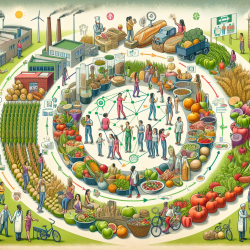Introduction
The research article "Food Systems and Public Health Disparities" highlights the intricate relationship between food systems and health disparities in the United States. As a practitioner working with children, understanding these dynamics can significantly enhance your ability to create better health outcomes. This blog will explore key findings from the research and suggest ways to integrate these insights into your practice.
Understanding the Conceptual Model
The article presents a conceptual model illustrating how food systems contribute to health disparities. It identifies pathways where food supply, affordability, and marketing intersect with community environments, influencing individual dietary choices. These pathways are filtered through social disparities, exacerbating health disparities. Recognizing these connections is crucial for practitioners aiming to address health issues holistically.
Key Findings and Implications for Practice
- Food Supply and Affordability: The research emphasizes that food supply and affordability are significant determinants of dietary choices. Practitioners can advocate for policies that promote the availability of healthy, affordable food options in schools and communities.
- Environmental and Occupational Health: The environmental and occupational health impacts of food production disproportionately affect low-income and minority communities. Understanding these impacts can help practitioners develop targeted interventions to mitigate these effects.
- Community Engagement: Engaging communities in developing food policies can lead to more sustainable and equitable food systems. Practitioners can facilitate community involvement in food policy councils to address local health disparities.
Encouraging Further Research
The article underscores the need for further research to explore the nutritional impacts of sustainably produced food and evaluate interventions in alternative food systems. Practitioners can contribute to this research by documenting and sharing outcomes from their interventions, thus enriching the evidence base for effective strategies.
Conclusion
Addressing health disparities requires a comprehensive approach that considers the systemic nature of food systems. By integrating the insights from this research into practice, practitioners can play a pivotal role in promoting health equity. For those interested in delving deeper into the research, the original paper provides a wealth of information and can be accessed here.










